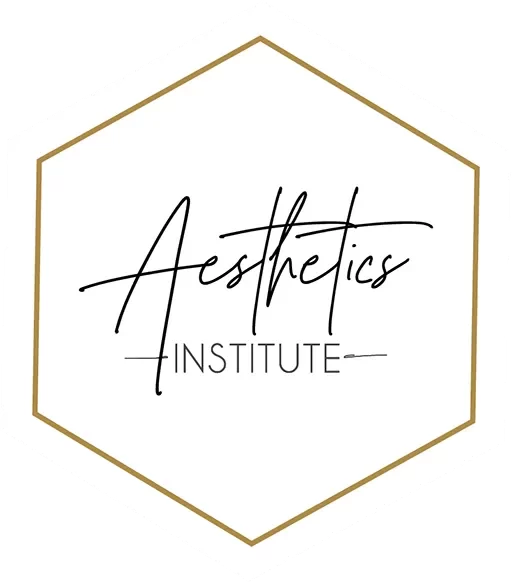AESTHETICS INSTITUTE
Medical Spa Treatment Beginner’s Guide
Welcome to our Beginner’s Guide and we are honored with your trust to receive a Medical Spa Treatment from the Aesthetics Institute. We support your commitment to the health of your skin and we are happy to be a part of your skincare regimen.
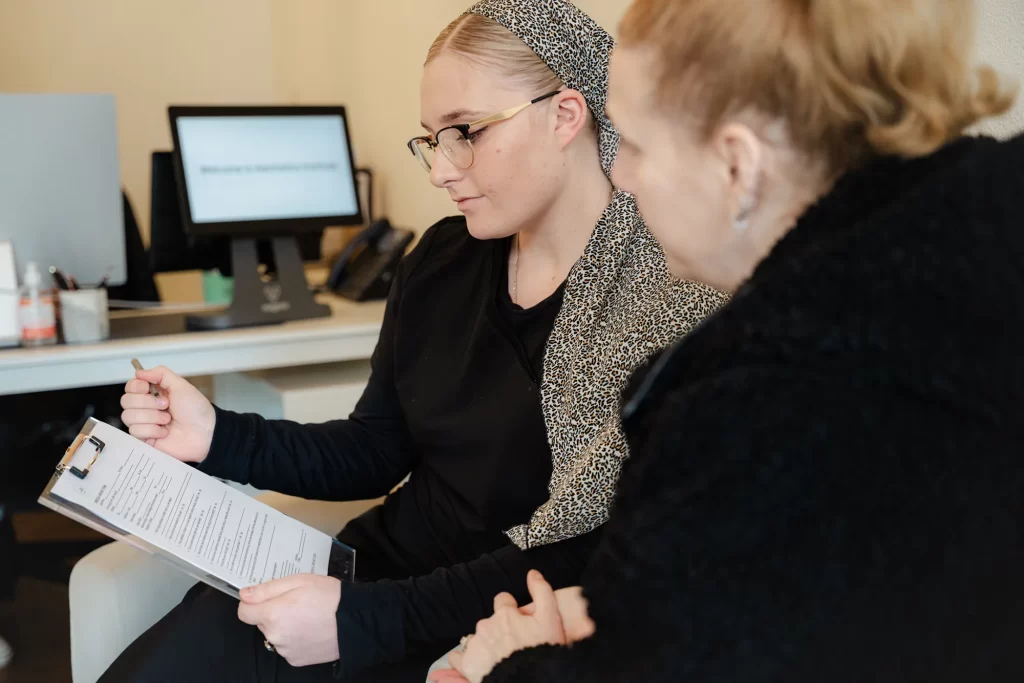
For those new to medical spa treatments, this guide is meant to serve as a broad overview of what is to be expected before, on the day of, and after your treatment.
All advanced esthetics treatments at our school are performed by Advanced Esthetics students under consultation with our licensed teaching staff.
All advanced esthetics students have already completed their general esthetics training and have passed all necessary in-house tests and competencies within their Advanced Esthetics Program before they begin providing services and treatments to clients.
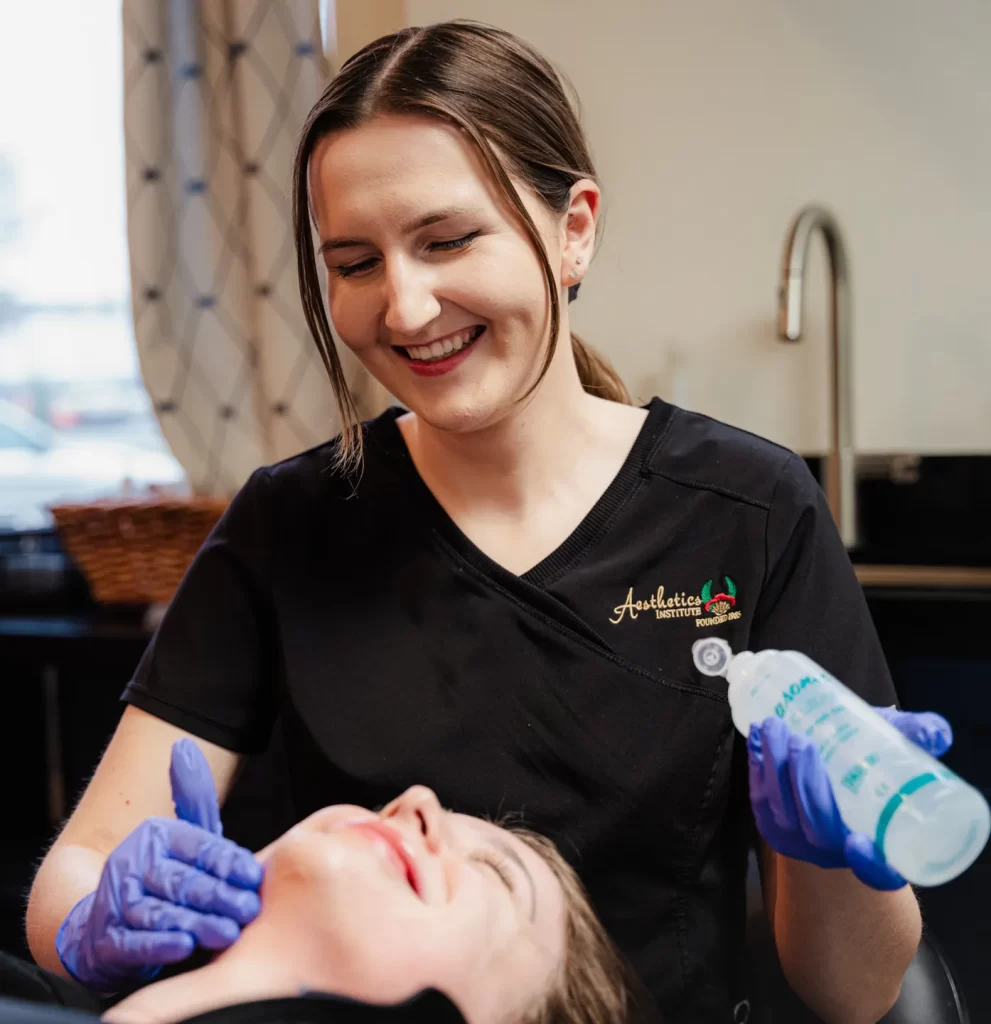
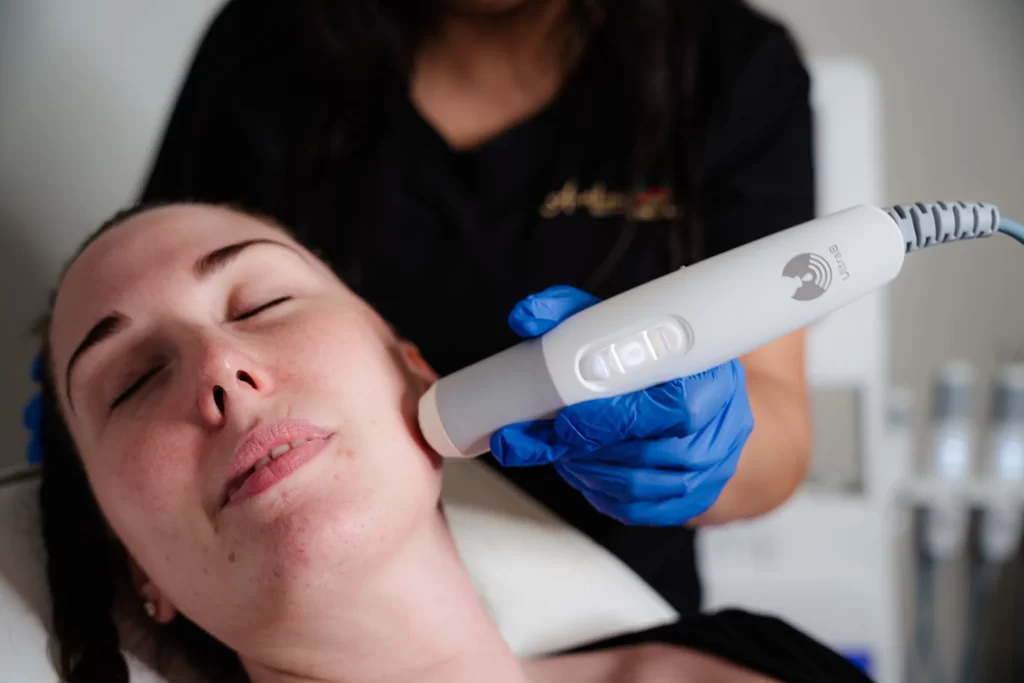
This guide is not meant to be exhaustive, and your advanced student esthetician will go over all procedure details, as well as pre and post-care information about your specific treatment.
We encourage you to ask the advanced student esthetician any and all questions you may have about your service as well as the instructor. An instructor will always confirm the treatment parameters before the treatment begins.
We offer a wide variety of medical spa services at our school, so please speak with your advanced student esthetician about your skincare goals, as they will be able to recommend a treatment plan to help you achieve your desired results.
Thank you again for choosing the Aesthetics Institute and for supporting our students in their esthetics education and training.
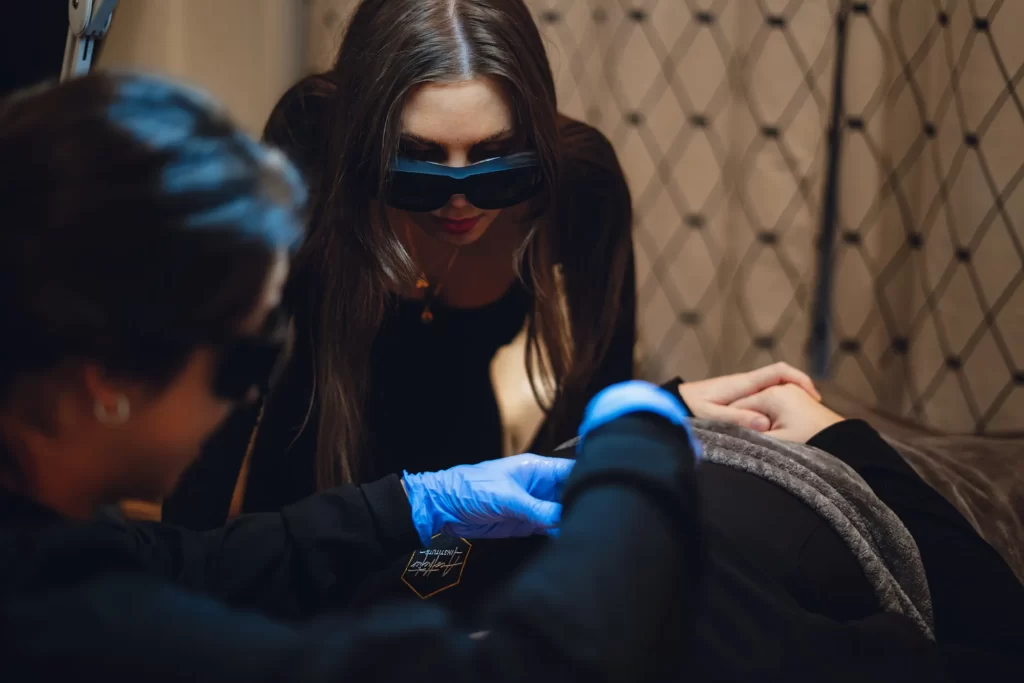
Medical Spa Policies
Medical Spa Etiquette Policy
Please arrive a few minutes early to find parking and use the restroom before your treatment starts. Please silence phones upon arrival, as phone use is prohibited during your treatment. If you arrive late, your treatment may be shortened to end at the previously scheduled time, as a courtesy to our other clients.
Gratuity Policy
In appreciation for an outstanding experience, gratuities may be given at your discretion in cash only.
Child Policy
To ensure we give our clients the attention they deserve, we ask that our clients not bring children under the age of 14 unless the child is scheduled for an appointment. Anyone under the age of 18 must have a parent or guardian sign the intake form and any needed consent forms.
Cancellation Policy
Please be advised all clients/patients are subject to our 48-hour cancellation policy. Appointments canceled or rescheduled with less than 48 hours notice will result in a charge of 100% of the price of the scheduled service(s).
Appointments that are missed without notice (no-show) will result in a charge of 100% of the total price of the scheduled service(s).
Waitlist Policy
Our online waitlist is first come, first serve. If you have added yourself to the waitlist for a specific service, you will receive an email if that service becomes available. You will have one (1) hour to confirm the service before it is offered to the next client on the waitlist. Appointments may become available suddenly, so please respond as soon as possible.
Right to Refuse Service
A safe learning environment for our students is our top priority. We want to accommodate all clients. However, we do not tolerate rude, disrespectful, or dangerous speech or behavior from our clients toward our students or staff. Clients behaving inappropriately will be asked to leave and not return.
Parking
You will find free complimentary parking directly next to our building on SE 23rd Avenue, where you will also find our lobby doors.
Reviews
We would love to hear your feedback about your student esthetician. We hope that we have delivered an exceptional customer service experience with results you love. We always strive to educate our students on creating the best client experience, and your honest feedback truly helps us accomplish that.
If you ever have a question or concern about your student esthetician or the level of care you have received, we kindly ask you to speak with one of our instructors or staff members immediately.
It is paramount we make sure you always feel one hundred percent comfortable with the level of service and care you have received at our school.
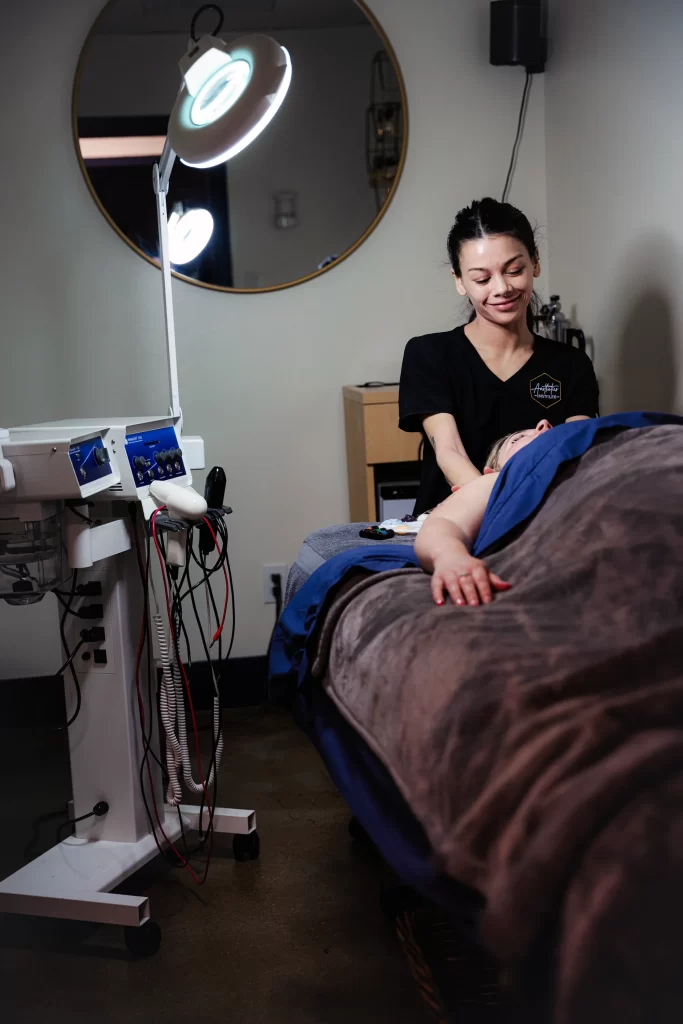
Advanced Esthetics Services Guide
Non-Ablative Fractional Laser Resurfacing
Non-ablative fractional laser resurfacing is a laser-based skin treatment that targets all signs of premature skin aging and scarring on the face and body.
With this treatment, we can focus on fine lines and wrinkles, deep pigmentation such as sun damage and melasma, and uneven skin texture from acne scarring, stretch marks, or surgical scarring.
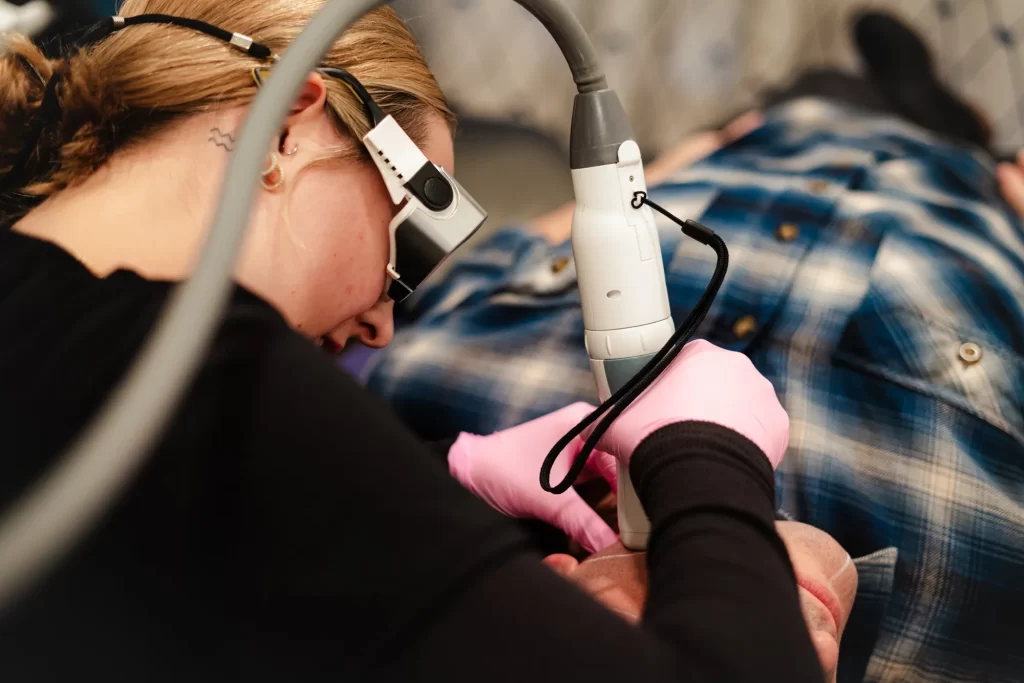

To prepare for the treatment, two weeks prior to your appointment, avoid all direct sun exposure and stop applying any exfoliative skin care products, including Retin A, glycolic acids, scrubs, etc.
Occasionally some medications create photo light sensitivities. Please consult with your medical prescriber if you believe you may be taking any of these types of medication and if you are advised to receive this type of treatment.
Lasers are not intuitive, and they can’t tell the difference between color at the surface of the skin (tan or sunburn) and the color deep in the skin (sun damage or redness).
While the skin is healing, you will avoid sun exposure for at least seven days following your treatment and diligently wear sunscreen for at least two weeks.
During your consultation, your student esthetician will review your health history to ensure that this is the correct treatment for you and your skincare goals and that you understand how to care for your skin following your treatment and all potential risks.
When getting an advanced treatment, skin care must be used to support your long-term goals. 80% of your overall long-term results come from daily skincare habits, and only 20% comes from treatments done.
Using a daily SPF, Vitamin A, Vitamin C, and potentially a tyrosinase inhibitor is important if you are trying to target sun damage. A Vitamin C and redness inhibitor are recommended for redness, along with daily SPF.
During your consultation, you will also get a recommended treatment plan that details how many treatments you will need to achieve your goals, how frequently you need to come in, and how often you will need to return for maintenance.

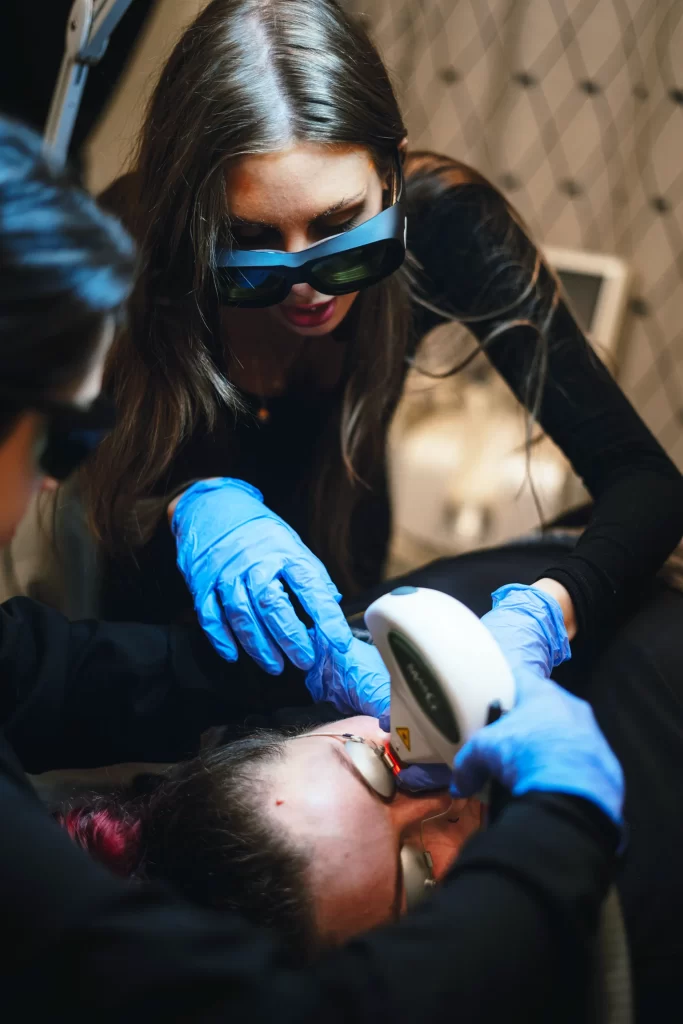
The treatment starts with fully cleansing your skin to remove makeup, debris, and excess oil. The skin is prepped with an antiseptic to make sure it’s fully clean and no residue remains on the skin.
Once your skin is prepped, your treatment will begin. Your provider will work in small sections to ensure the skin is evenly treated.
After your treatment, your skin may feel hot and tender for a few hours, similar to a sunburn or windburn. You should not apply anything to your skin until the heat has fully dissipated.
You may apply a clean, cool (not ice cold) compress to the skin following your treatment to reduce the intense heat feeling.
You can wear makeup after 24 hours but should continue to use gentle skincare for the next two weeks and avoid all forms of exfoliation.
Over the course of the next seven days, your skin will feel dry and flaky, and you may notice crusty brown spots on the surface of your skin. Do not exfoliate these; allow the skin to flake off by itself. After two weeks, you may return to your normal skincare routine.
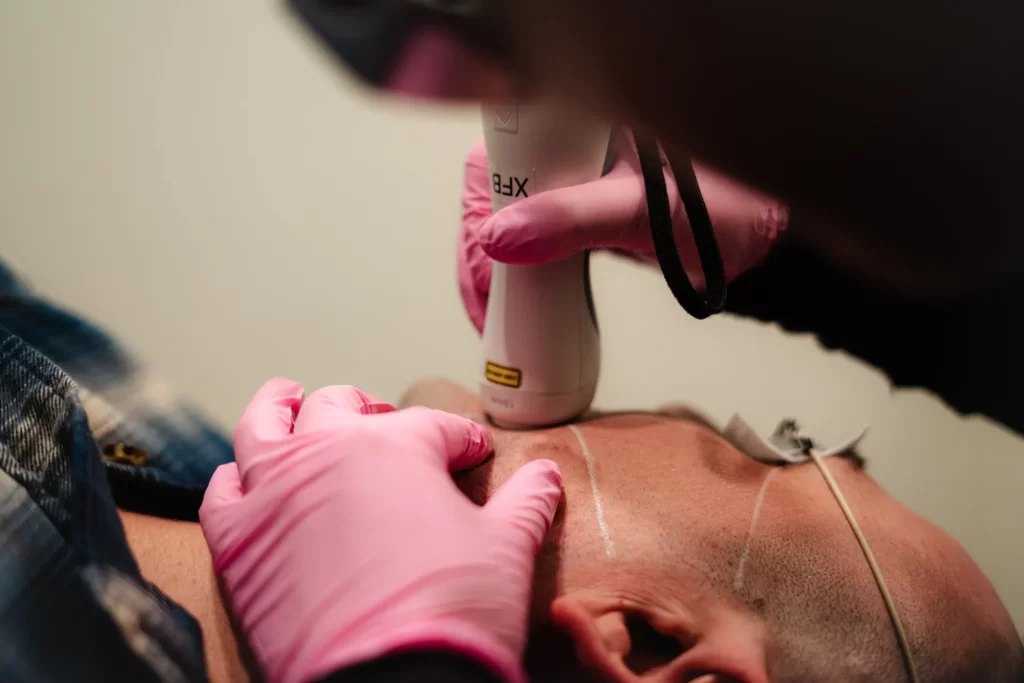
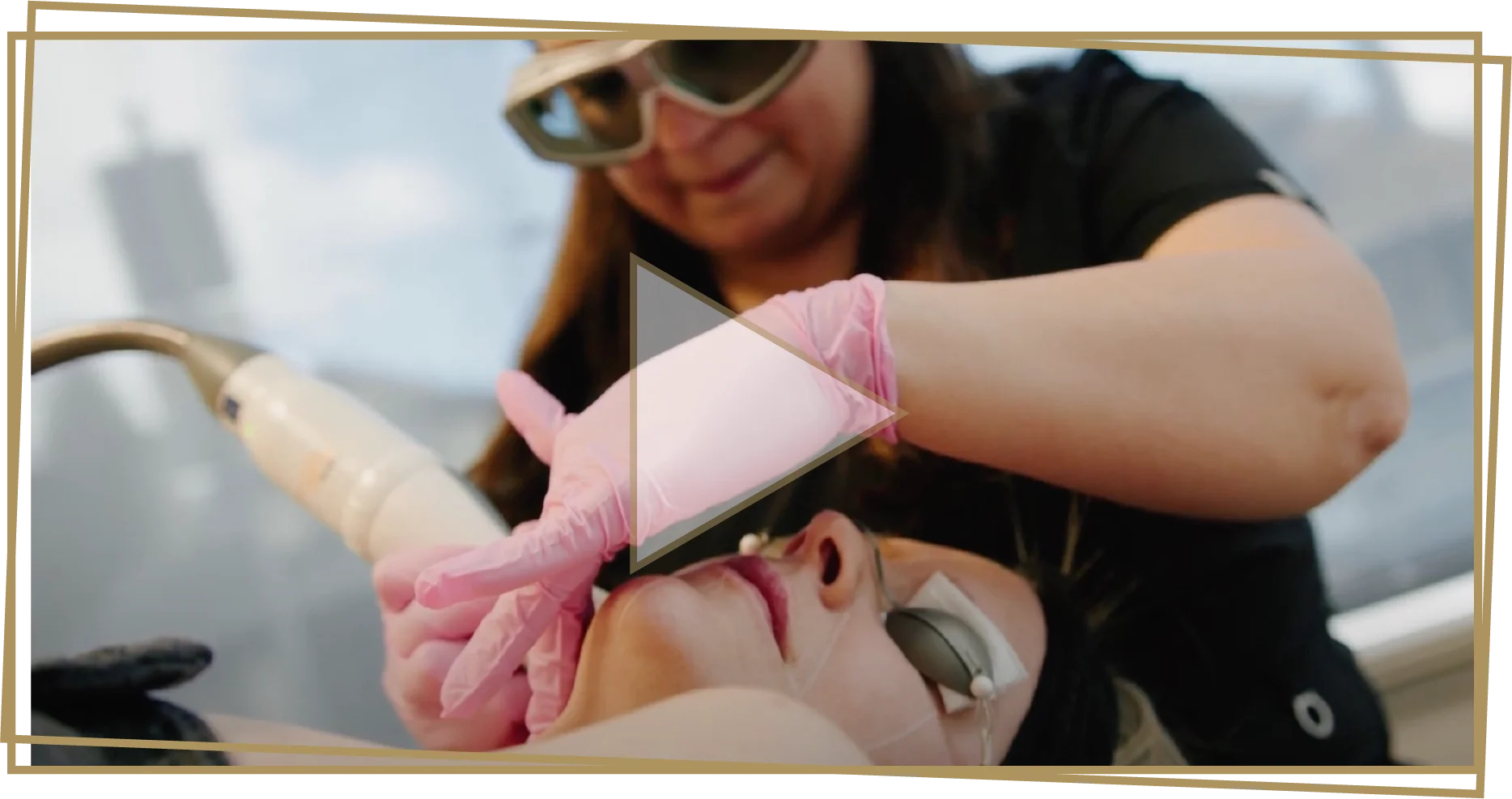
Photorejuvenation and Dyschromia Reduction (IPL)
Photorejuvenation and Dyschromia Reduction IPL (Intense Pulsed Light) is a light-based skin therapy that targets hyperpigmentation and redness and addresses overall skin rejuvenation.
Broadband light is pulsed into the skin to target melanin for hyperpigmentation and oxyhemoglobin for redness using a variety of wavelengths to reach different depths in the skin.
The melanin or oxyhemoglobin absorbs the light and converts it into heat, damaging the cells and triggering the body’s wound-healing process.
Over the two weeks following your treatment, the treated tissue will be absorbed back into the body or will come up to the skin’s surface to flake off its pigmentation, leaving behind even, radiant skin.
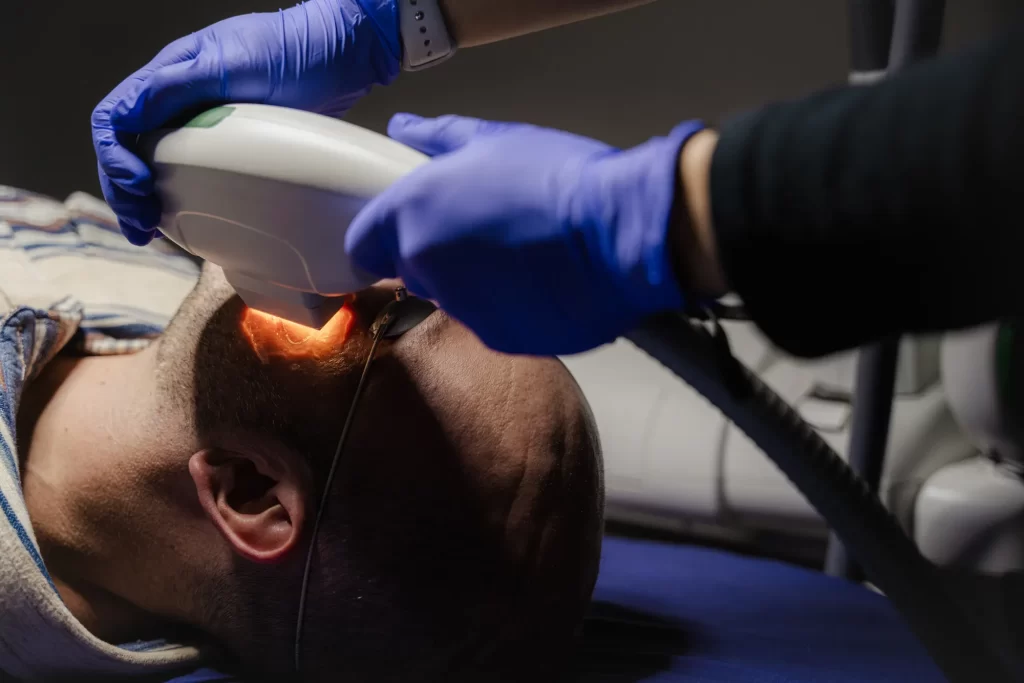
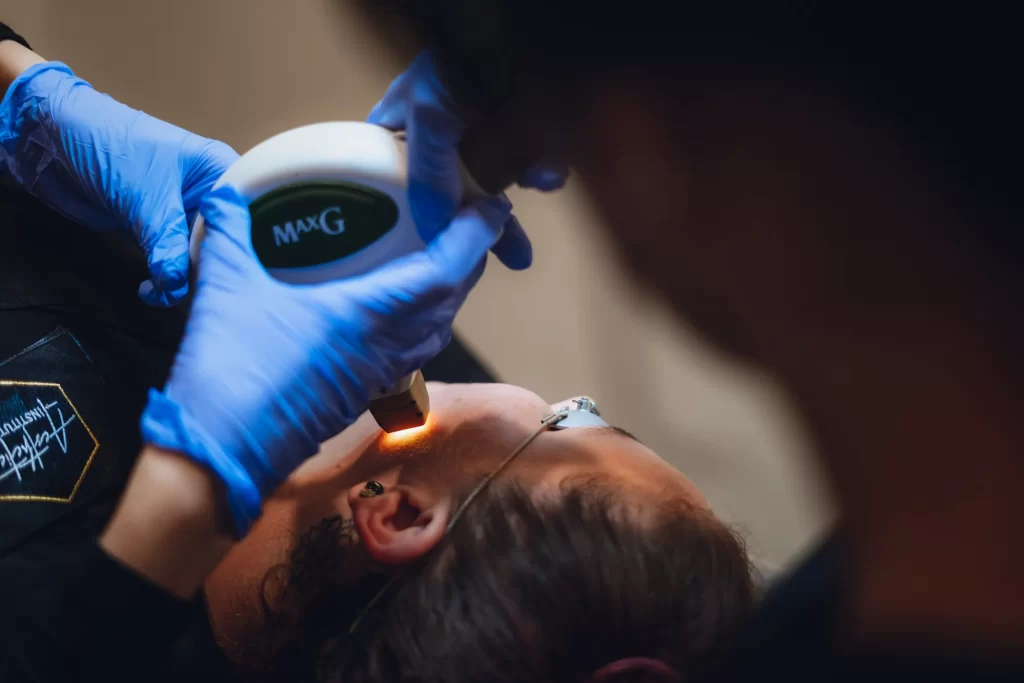
To prepare for the treatment, two weeks prior to your appointment, avoid all direct sun exposure and stop applying any exfoliative skin care products, including Retin A, glycolic acids, scrubs, etc.
Occasionally some medications create photo light sensitivities. Please consult with your medical prescriber if you believe you may be taking any of these types of medication and if you are advised to receive this type of treatment.
Lasers are not intuitive, and they can’t tell the difference between color at the surface of the skin (tan or sunburn) and the color deep in the skin (sun damage or redness).
While the skin is healing, you will avoid sun exposure for at least seven days following your treatment and diligently wear sunscreen for at least two weeks.
During your consultation, your student esthetician will review your health history to ensure that this is the correct treatment for you and your skincare goals and that you understand how to care for your skin following your treatment and all potential risks.
When getting an advanced treatment like IPL done, it’s important to use skincare that supports your long-term goals.
80% of your overall long-term results come from daily skincare, and only 20% comes from treatments done. A daily SPF, Vitamin A, Vitamin C, and potentially a tyrosinase inhibitor are important if you are trying to target sun damage.
A Vitamin C and redness inhibitor are recommended for redness, along with daily SPF.
During your consultation, you will also get a recommended treatment plan that details how many treatments you will need to achieve your goals, how frequently you need to come in, and how often you will need to return for maintenance.
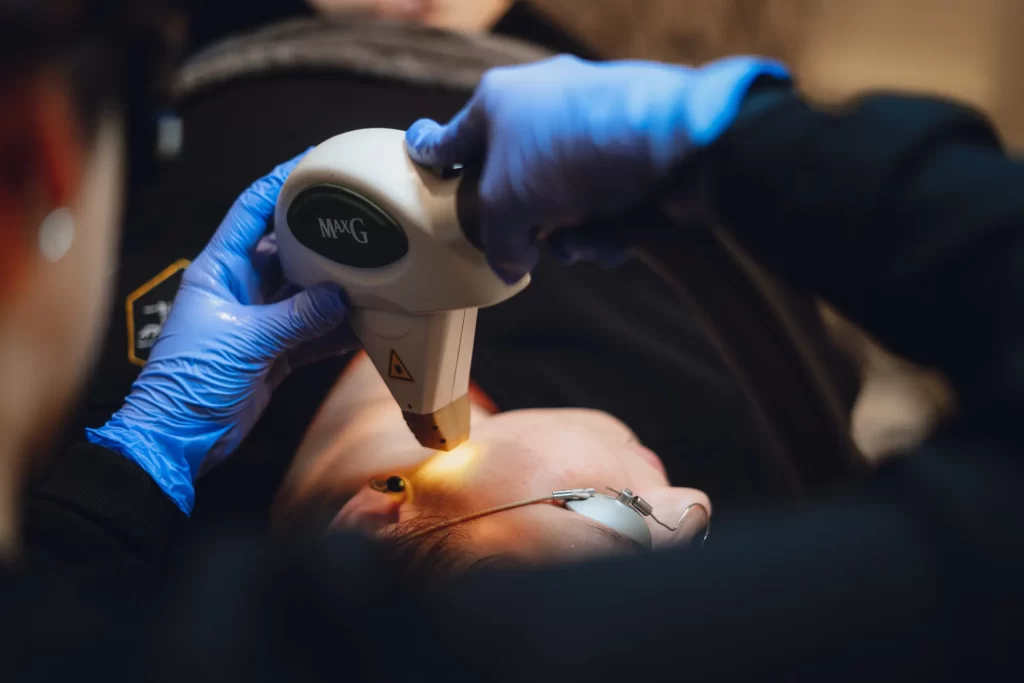

The treatment starts by cleansing the skin to remove any makeup, debris, and oil from the skin so the light can fully penetrate. Once the skin is clean, a thin layer of ultrasound gel will be applied to the area to be treated.
It is a neutral conducting solution that helps cool the skin and provide some hydration. Your treatment will be performed carefully, taking into consideration how your skin reacts and adjusting as needed.
Your student esthetician will be looking for specific clinical endpoints that tell them the treatment is successful and within safe treatment parameters.
After your treatment, your skin may feel warm and tender for a few hours, like a mild sunburn or windburn. You can wear makeup after 24 hours but should continue to use gentle skincare for the next week and avoid all forms of exfoliation.
Over the course of the next 14 days, you may notice dark spots that look a little bit like coffee grounds on the surface of your skin. After your skin has stopped flaking, you may return to your usual skincare routine.
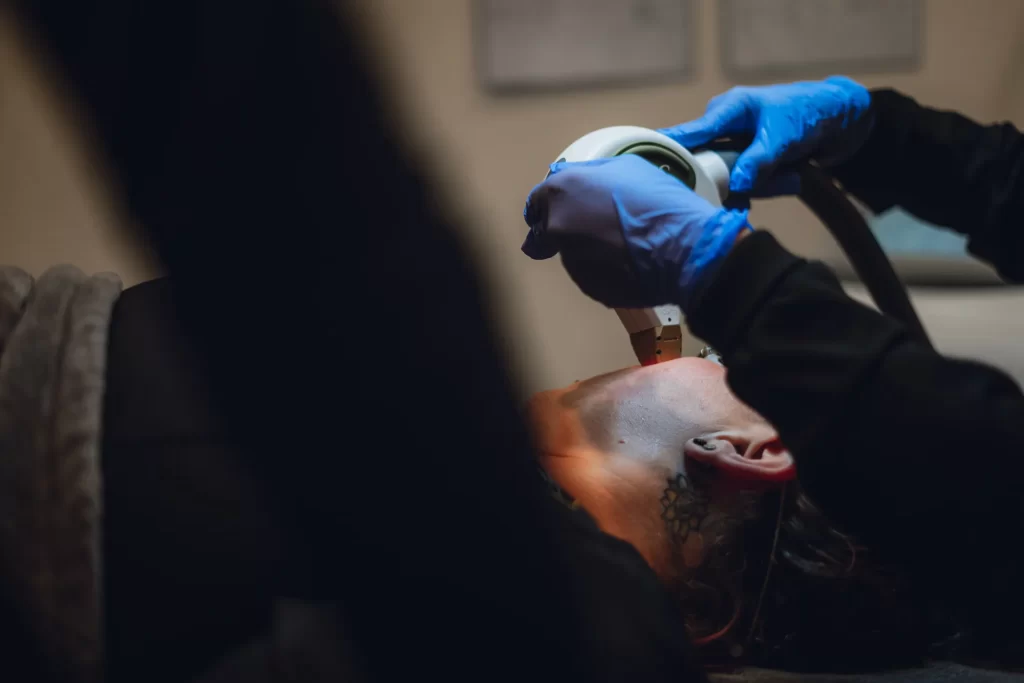

Laser Hair Removal
Laser hair removal (also known as laser hair reduction) is the most common form of semi-permanent hair removal on the market.
Light is pulsed into the skin to target the melanin inside the hair follicle and deliver destructive energy to the cells inside the follicle.
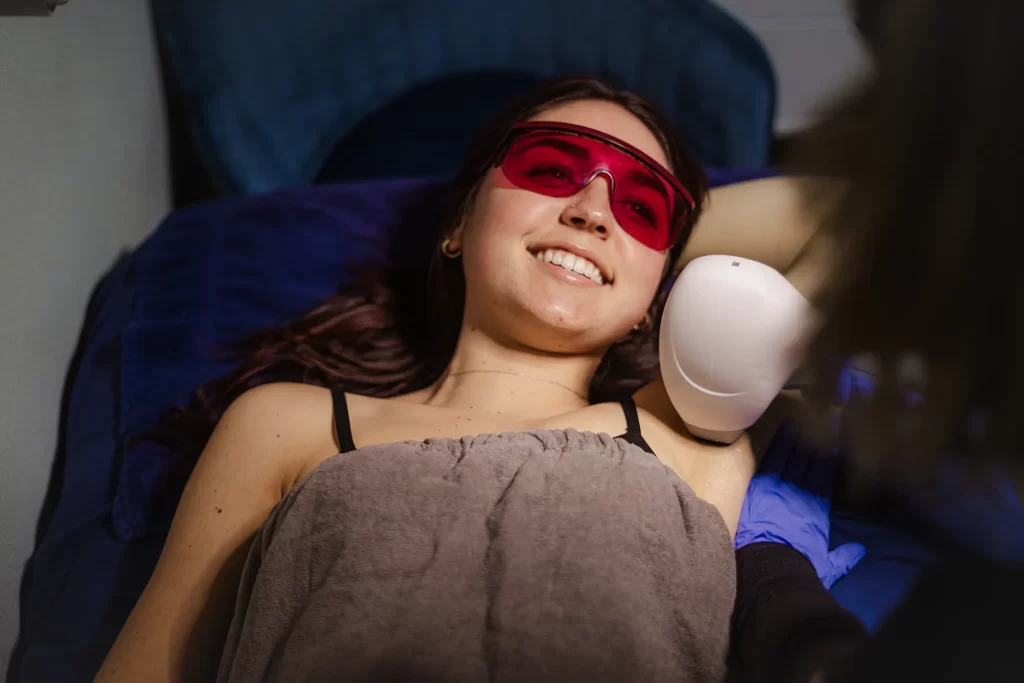
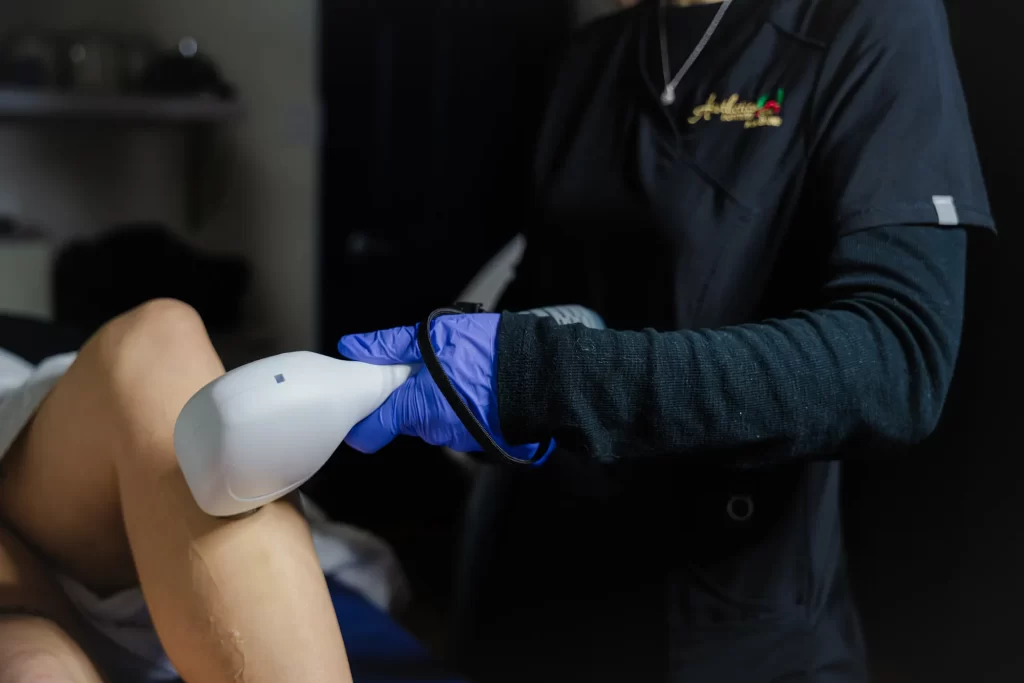
To prepare for the treatment, two weeks prior to your appointment, avoid all direct sun exposure and stop applying any exfoliative skin care products, including Retin A, glycolic acids, scrubs, etc. Occasionally some medications create photo light sensitivities.
Please consult with your medical prescriber if you believe you may be taking any of these types of medication and if you are advised to receive this type of treatment. You will want to exfoliate and shave the night before or morning of your appointment.
During your consultation, your student esthetician will review your health history to ensure that it is the right treatment for you and that you understand how to prepare for it, how to care for your skin following your skin, and all potential risks.
When getting an advanced treatment like LHR done, it’s important to follow all pre-treatment and post-care instructions carefully for a safe treatment.
Treatments are typically done in a series of eight but can vary depending on which area you are treating, how dense the hair is, and how thick the hairs are. Treatments are typically done 4-6 weeks apart.
The treatment starts with cleansing the area to be treated to remove oil, product, and debris from the skin. A thin layer of ultrasound gel is applied to the area.
The treatment itself can be slightly uncomfortable and is often described as a quick flash of heat. After your treatment, there may be some perifollicular erythema and edema but no discomfort.
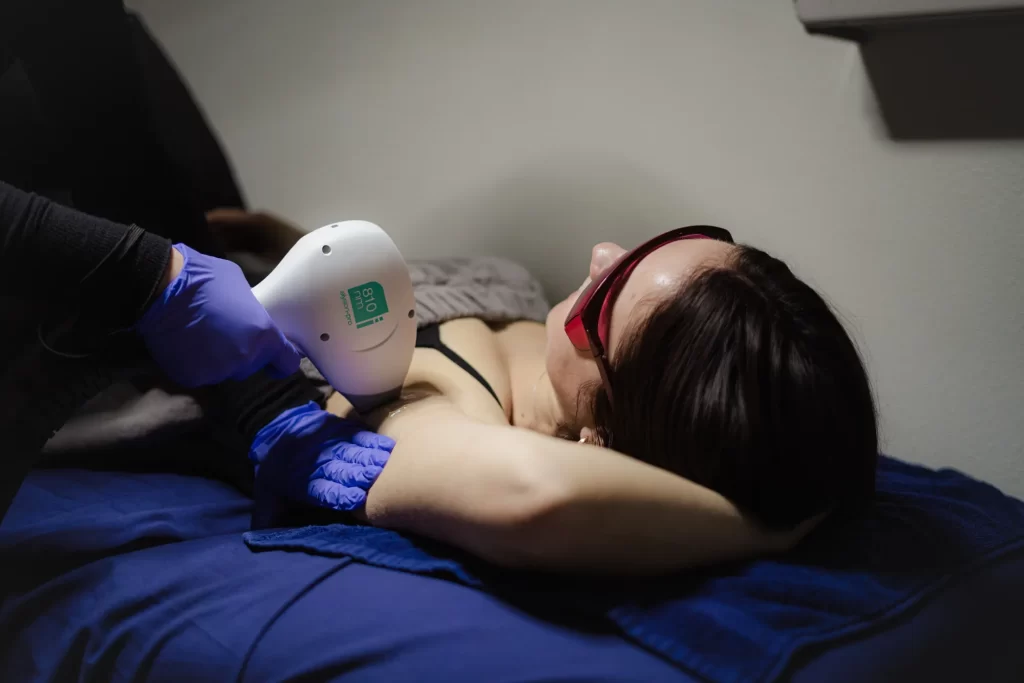
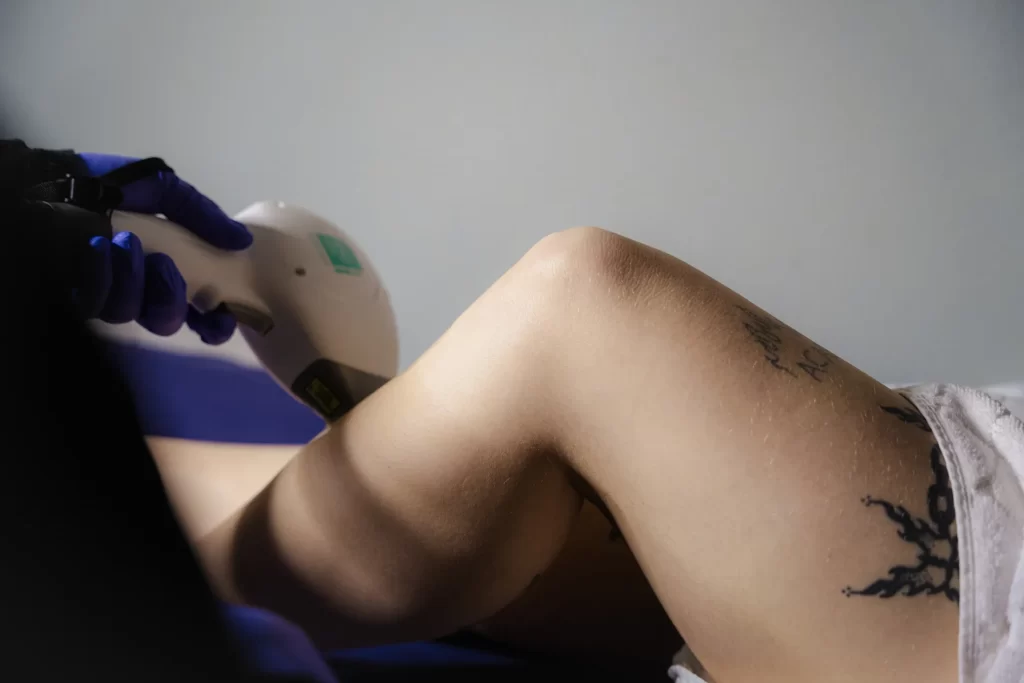
After your treatment, you will want to be gentle with your skin. Avoid heat, sun, sweating, and exfoliating for 24 hours, and wear sunscreen for a minimum of two weeks following your appointment.
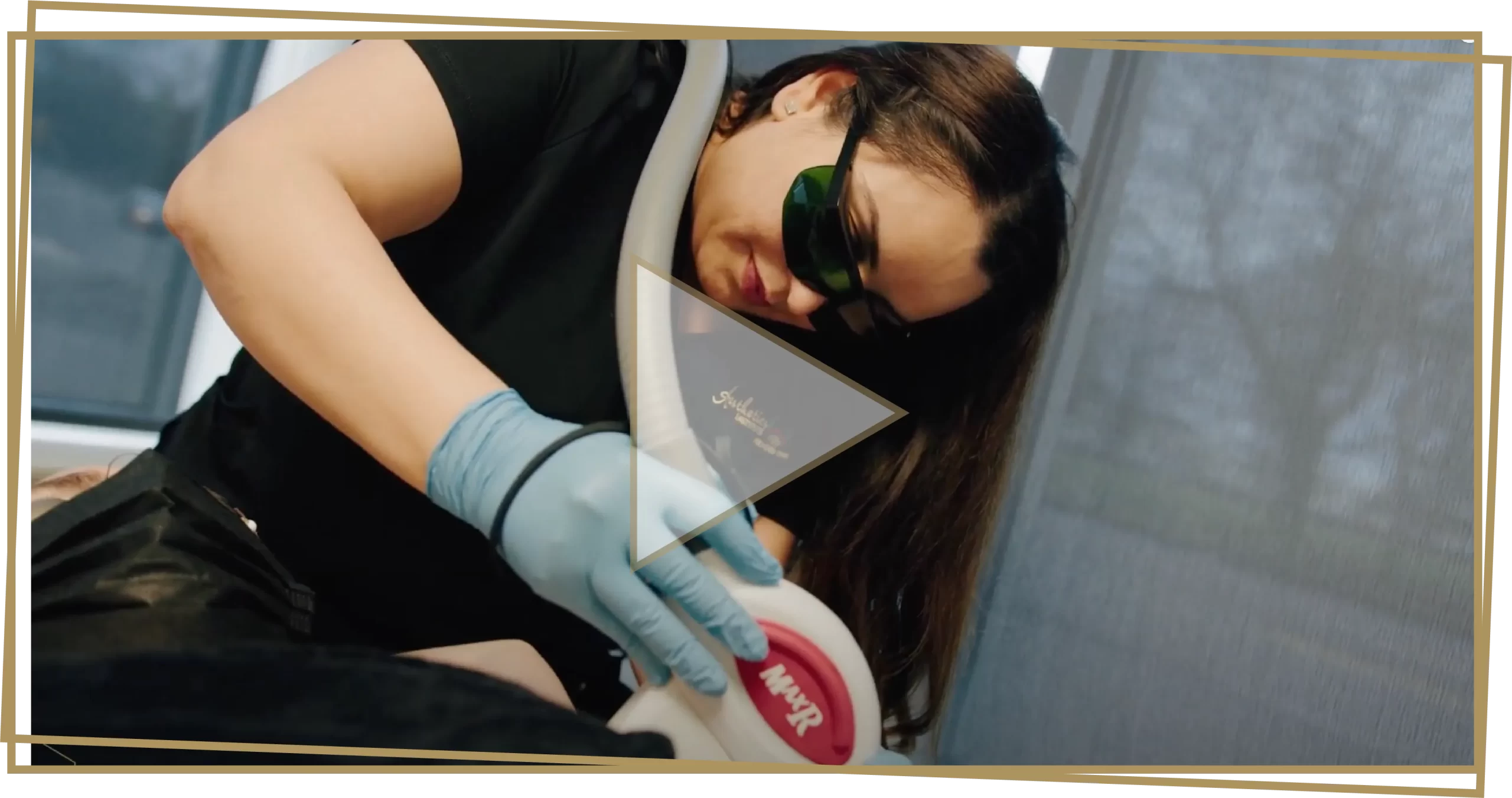
Microneedling
Microneedling is also known as “Collagen Induction Therapy” because it stimulates the body’s natural wound-healing process to produce collagen and elastin in the skin to target fine lines and wrinkles, acne scarring, and overall tone and texture.
A recent study found that just one microneedling treatment can produce the same amount of collagen as you lose over the course of an entire year.
Your treatment will be performed using a sterile cartridge with sterile surgical steel needles. These tiny needles create microchannels and micro-injuries in the skin, which tricks the body into producing new collagen and elastin to heal the skin.

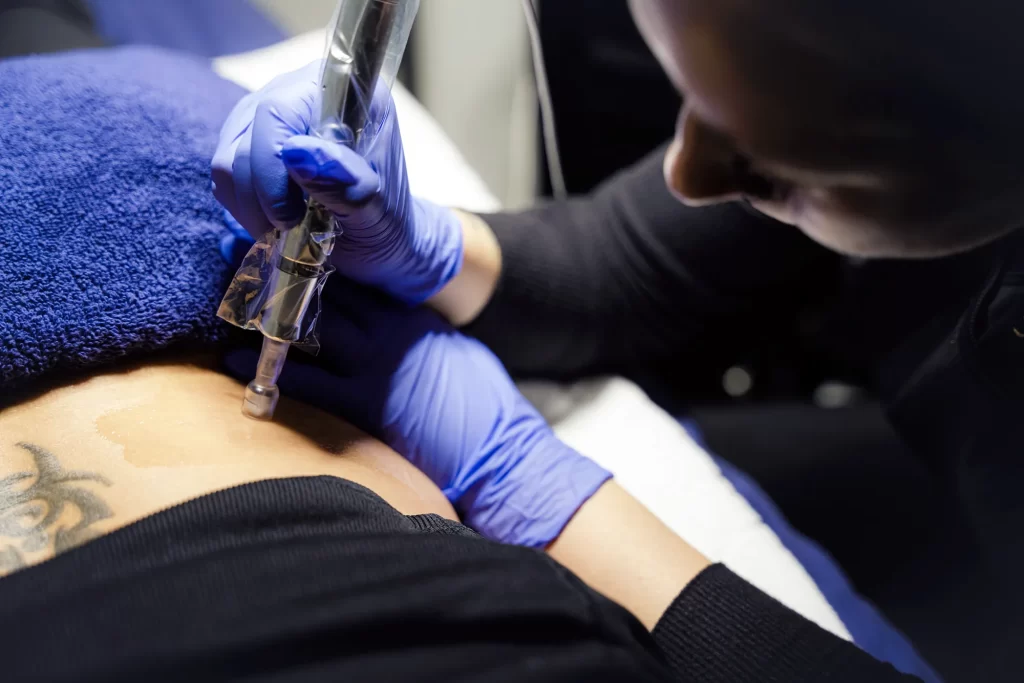
During your consultation, your student esthetician will review your health history to ensure that it is the right treatment for you and that you understand how to prepare for it, how to care for your skin following your skin, and all potential risks.
Microneedling is an easy recovery with minimal social downtime. Treatments are typically done in a series of 3-9 and can be repeated every 4-6 weeks.
To prepare for the treatment, two weeks prior to your appointment, stop applying any exfoliative skin care products, including Retin A, glycolic acids, scrubs, etc.
The treatment starts with fully cleansing your skin to remove makeup, debris, and excess oil. The skin is prepped with an antiseptic to make sure it’s fully clean and no residue remains on the skin.
Once your skin is prepped, a thin layer of gel is applied to the skin to provide glide for the device and to provide hydration in the skin.
The treatment itself is tolerable and not overly painful to most. It feels like a deep exfoliation, and you feel the vibration from the device. When your treatment is complete, your skin will feel warm and tender, like a slight sunburn or windburn.
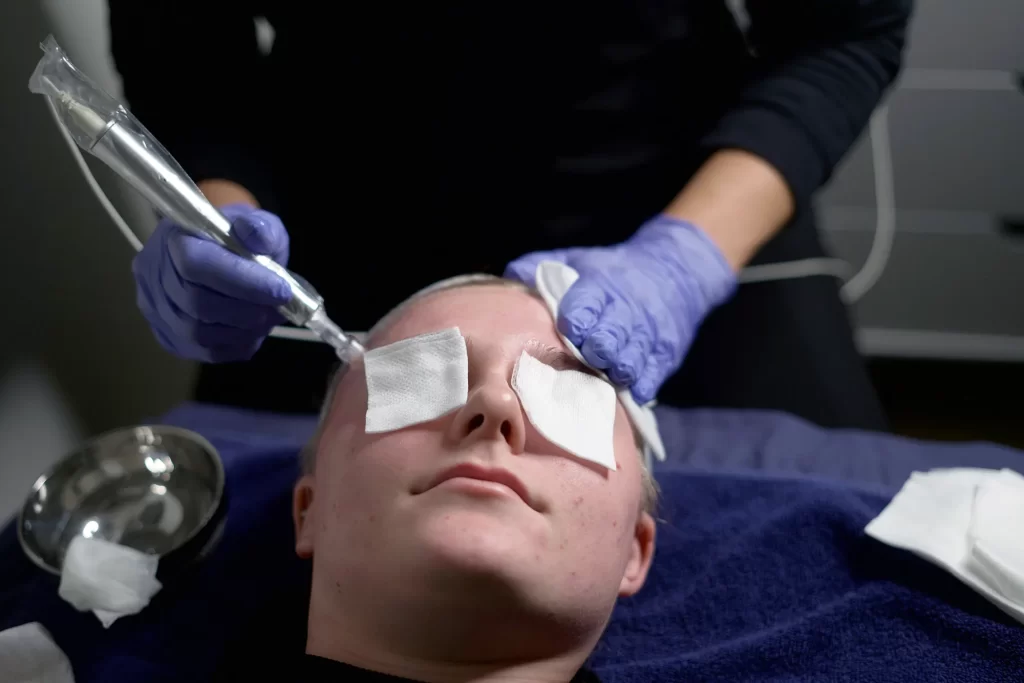

If you have received a microneedling treatment elsewhere, you may have experienced the application of a numbing cream. In a school environment, we are not able to administer or apply any prescribed topical numbing agent to clients.
After your treatment, you will want to be gentle with your skin. If you experience any mild swelling, you can sleep propped up on a pillow or take an antihistamine. You will avoid heat, sun, and sweating for 24 hours.
You can wear makeup after 24 hours but will want to continue to use gentle skincare for seven days following your treatment. Redness is common for up to five days, and flaking can occur for up to seven.
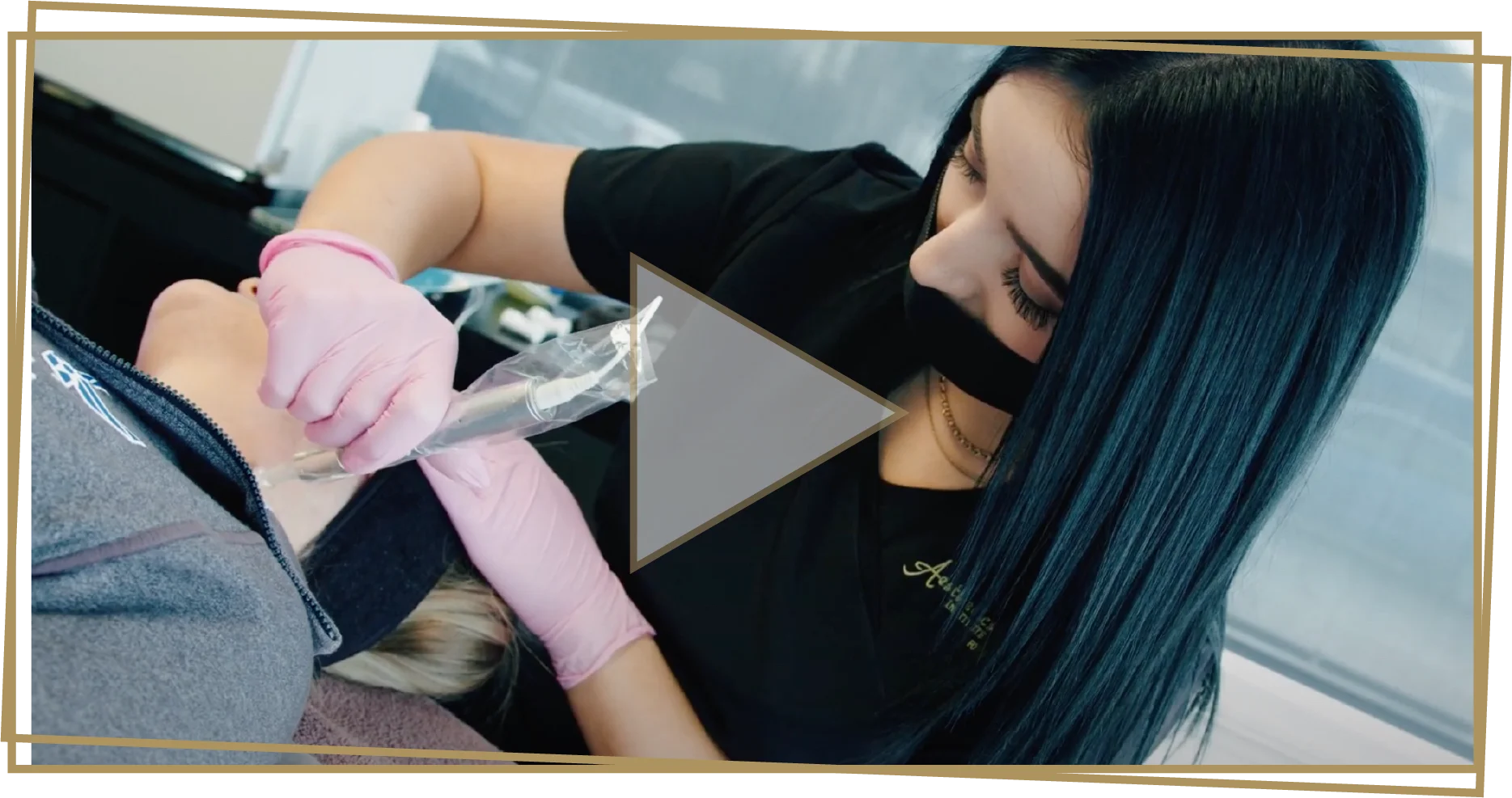
Dermaplaning
Dermaplaning is a deep exfoliation of the skin where a sterile surgical blade is used to scrape dead skin cells off the surface of the skin to reveal radiant, healthy-looking skin.
It helps to smooth out rough skin, encourage the production of new healthy skin cells, and it also does remove vellus hair (peach fuzz).
The treatment itself is quick, relaxing, and has no downtime associated with it. Your skin will be glowy and smooth after your treatment.
Dermaplaning is a great monthly treatment and can be added onto a DiamondGlow treatment or done directly before collagen-stimulating treatments like laser resurfacing, microneedling, and IPL to help those treatments produce more effective results.

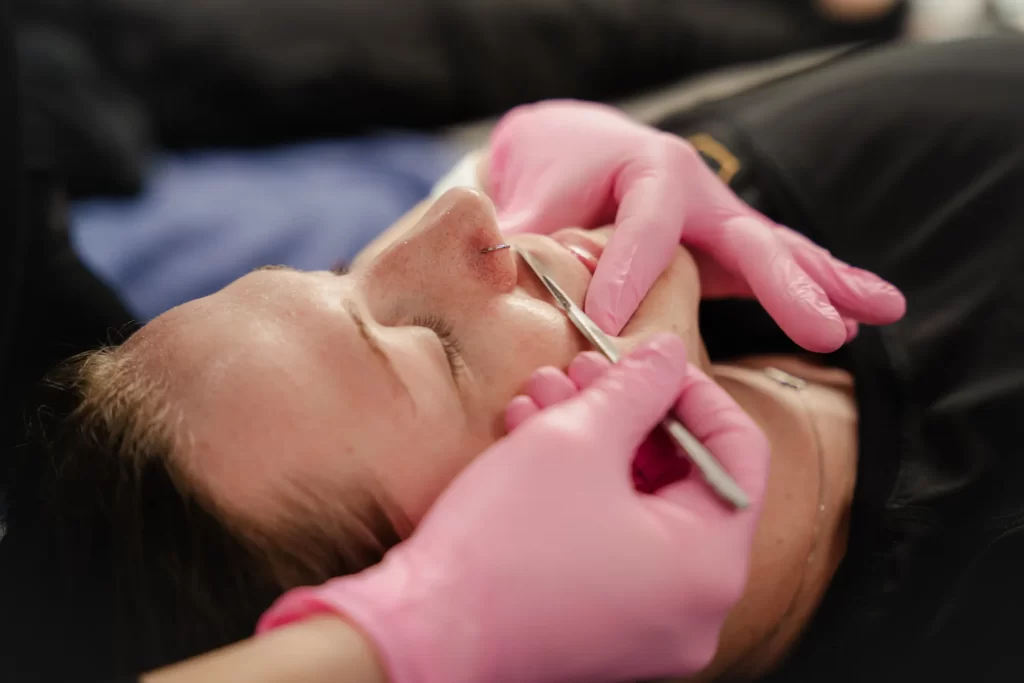
The treatment will start with your skin being cleansed to remove makeup residue, debris, and oil and then prepped with an antiseptic to dry out the surface of the skin and lift the cuticle.
Once the skin is prepped, a sterile surgical 10-blade is used to scrape the surface of the skin to remove dead skin cells and vellus hair.
After your treatment, you will want to be gentle with your skin. You will avoid heat, sun, and sweating for 24 hours.

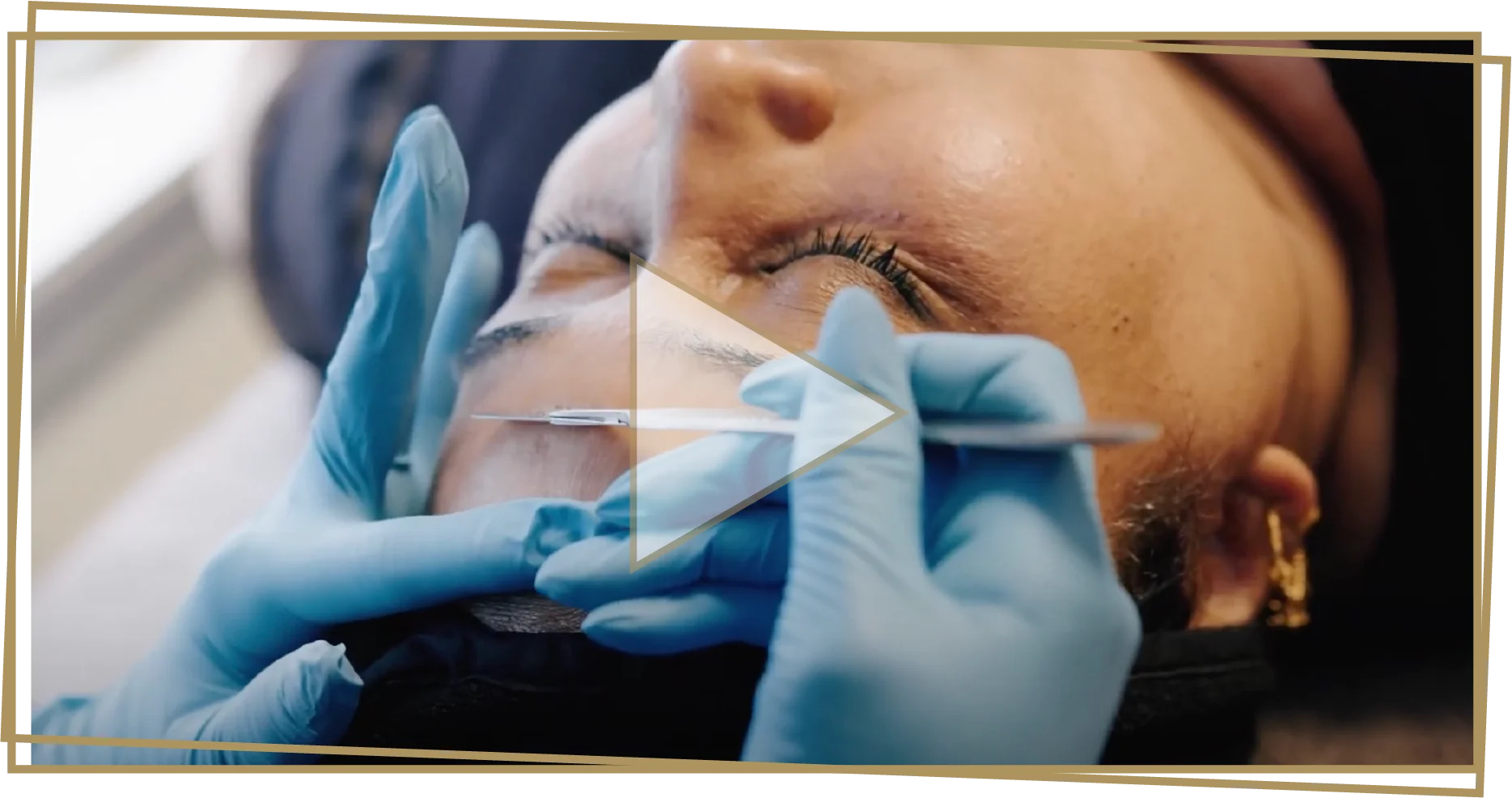
Body Contouring Cellulite Reduction
Viora Reaction is a quick treatment that tightens and firms the skin while smoothing dimples we commonly call cellulite on the face and body.
It utilizes Viora’s proprietary and revolutionary multi-RF technology, CORE (Channeling Optimized Radiofrequency Energy), in combination with suction to heat up the tissue to increase blood flow, stimulate fibroblast production in the skin, and kill fat cells.
Radiofrequency works on fat cells by heating them to a point at which lipolysis, or cell death, occurs, which can reduce the size of localized fat pockets on the body.
By increasing fibroblast production, we increase the amount of collagen being produced in the skin. Thicker skin means tighter skin and less visible dimples.

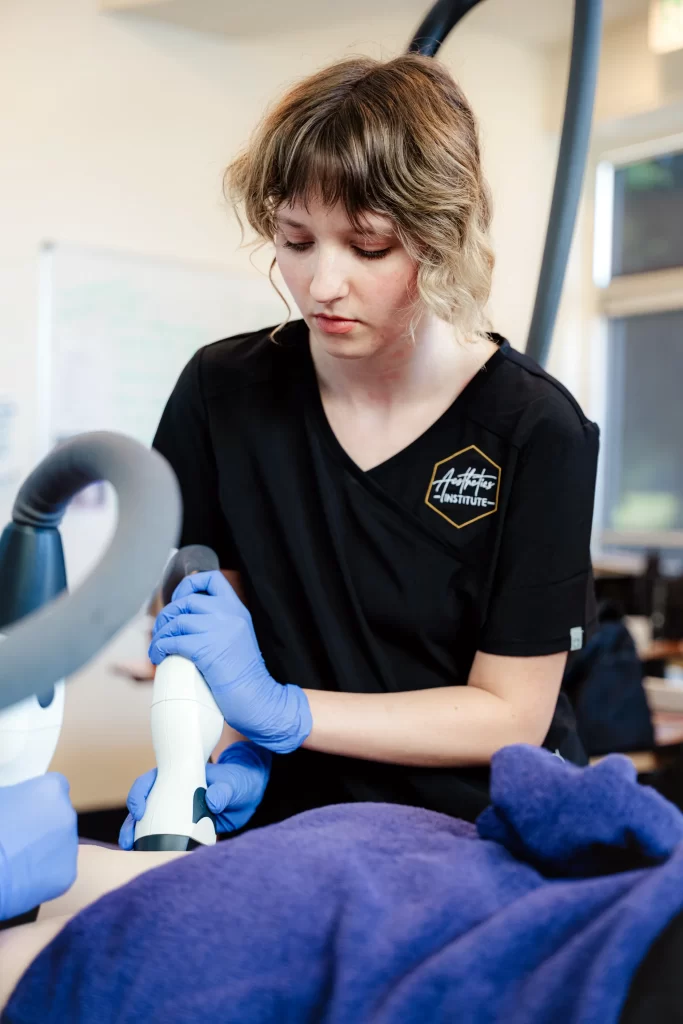
Your consultation will start with your student esthetician asking you to identify which areas you want to treat. They will explain the risks, how to prepare, and what to expect after.
They will then mark out the areas to be treated. They will then let you know how many treatments in each area you will need and how long each treatment will take. Treatments are ideally performed weekly until desired results are achieved.
The treatment will start with photos being taken of the face or body part(s) to be treated to track progress. The areas to be treated will be drawn out again and double-checked with you to make sure it looks correct.
You will then lie down in a comfortable position, and your treatment will begin.
A solution will be applied to the skin to help the handpiece glide and protect the skin. The first part of the treatment is getting the tissue up to the correct temperature, and the second part is maintaining that temperature to kill fat cells and stimulate collagen production in the skin.
There is no downtime associated with this treatment, but it is recommended that you drink plenty of water to help your lymphatic system move through the body.
Your metabolism will be elevated for a few days following your treatment, so don’t be surprised if you feel extra hungry.

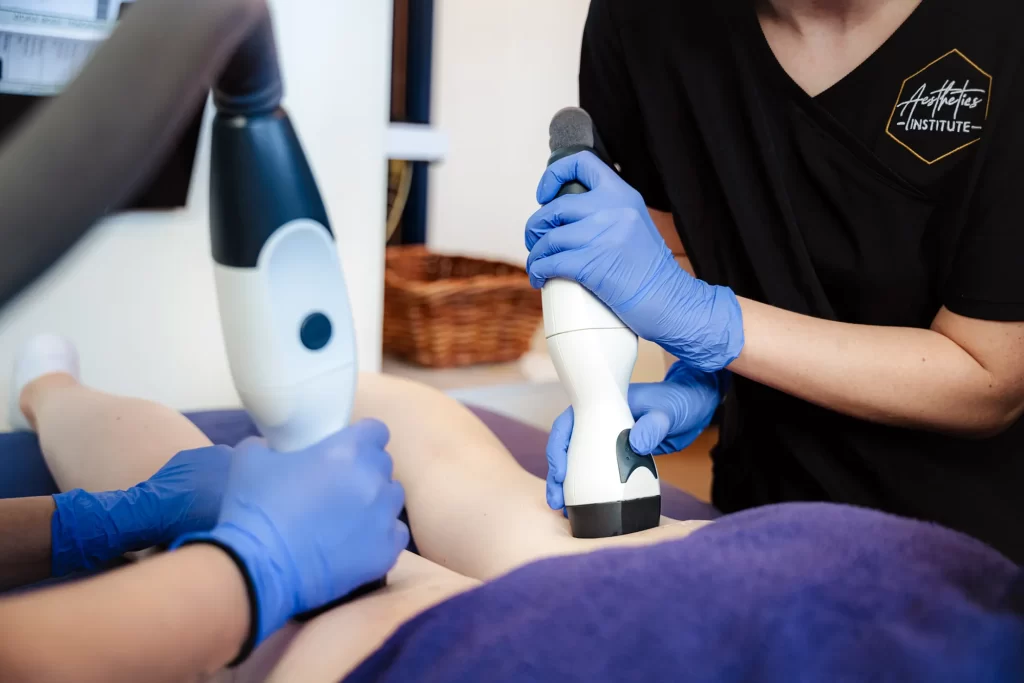
You are free to work out following your treatment which can also help the lymphatic system move quicker. You may notice some swelling and tenderness in the treated area that will return to normal within a few days.
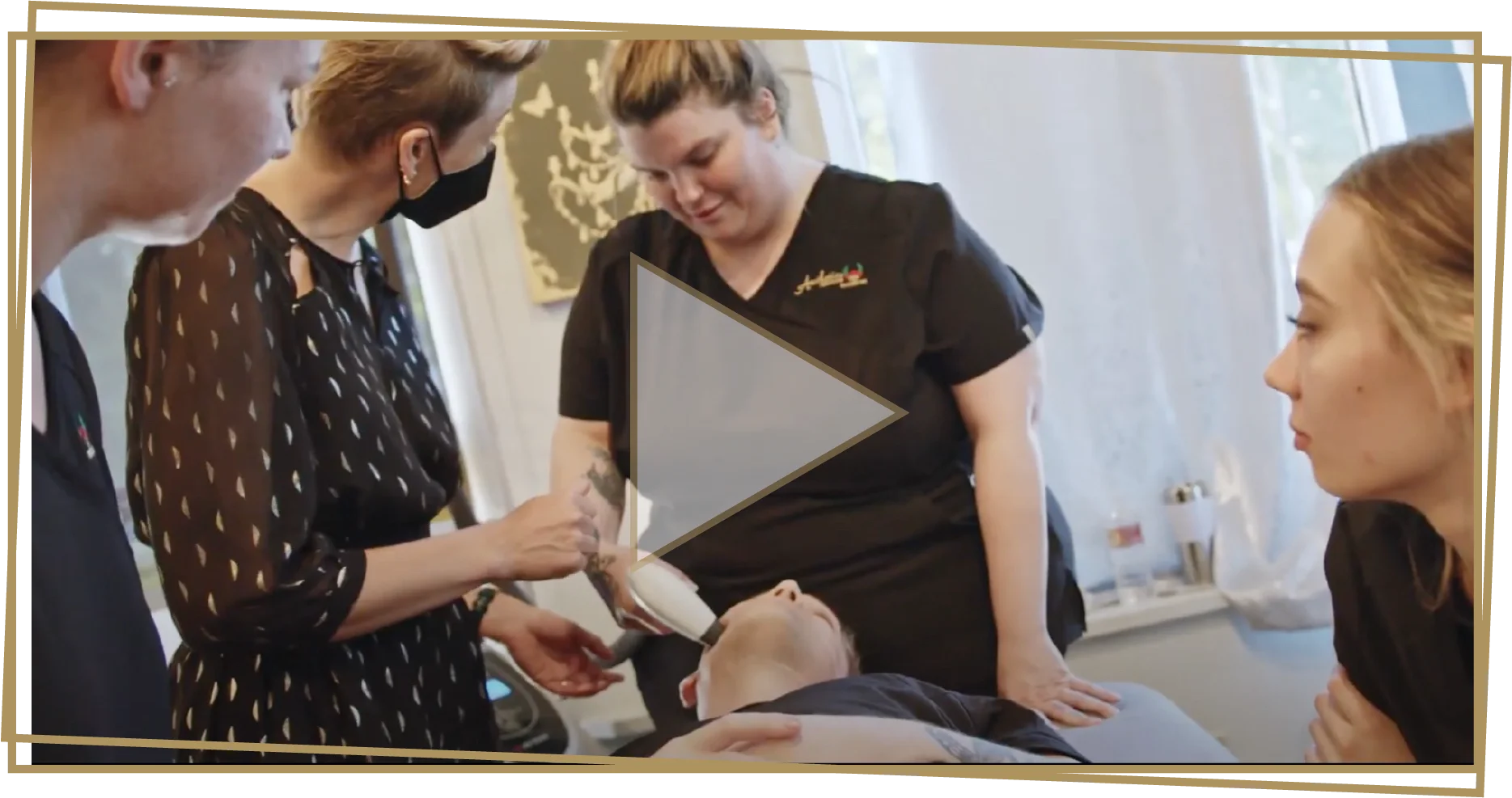
Skin Tightening
Viora Reaction is a quick treatment that tightens and firms the skin on the face and body. It utilizes Viora’s proprietary and revolutionary multi-RF technology, CORE (Channeling Optimized Radiofrequency Energy), to increase blood flow and stimulate fibroblast production in the skin.
By increasing fibroblast production, we increase the amount of collagen being produced in the skin. Thicker skin means tighter skin and less visible dimples.
Your consultation will start with your student esthetician asking you to identify which areas you want to treat. They will explain the risks, how to prepare, and what to expect after. They will then mark out the areas to be treated.
They will then let you know how many treatments in each area you will need and how long each treatment will take. Treatments are performed weekly until desired results are achieved.
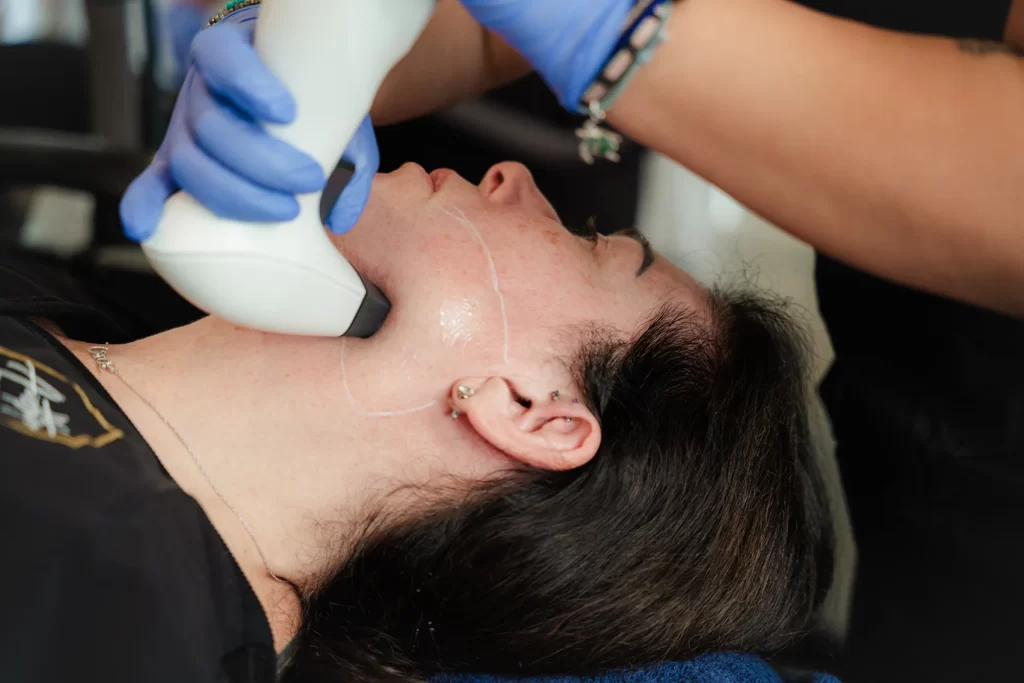
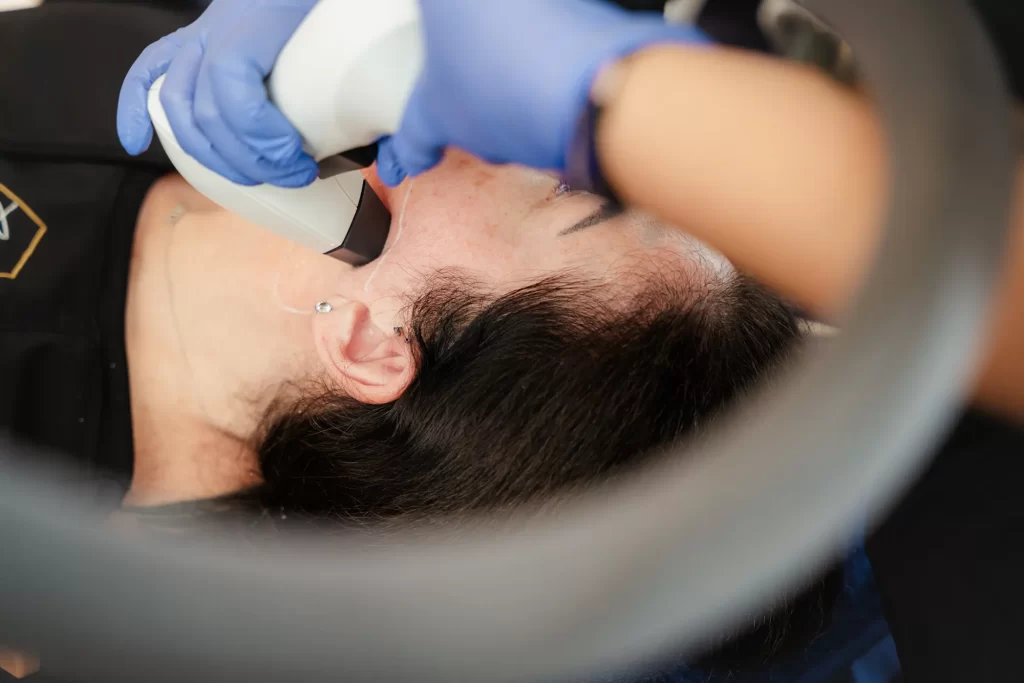
The treatment will start with photos being taken of the face or body part(s) to be treated to track progress. The areas to be treated will be drawn out again and double-checked with you to make sure it looks correct.
You will then lie down in a comfortable position, and your treatment will begin. Ultrasound gel will be applied to the skin to help the handpiece glide and protect the skin.
The first part of the treatment is getting the tissue up to the correct temperature, and the second part of the treatment is maintaining that temperature in order to kill fat cells and stimulate collagen production in the skin.
There is no downtime associated with this treatment, but it is recommended that you drink plenty of water to help your lymphatic system move through the body.
Your metabolism will be elevated for a few days following your treatment, so don’t be surprised if you feel extra hungry.
You are free to work out following your treatment which can also help the lymphatic system move quicker. You may notice some swelling and tenderness in the treated area that will return to normal within a few days.

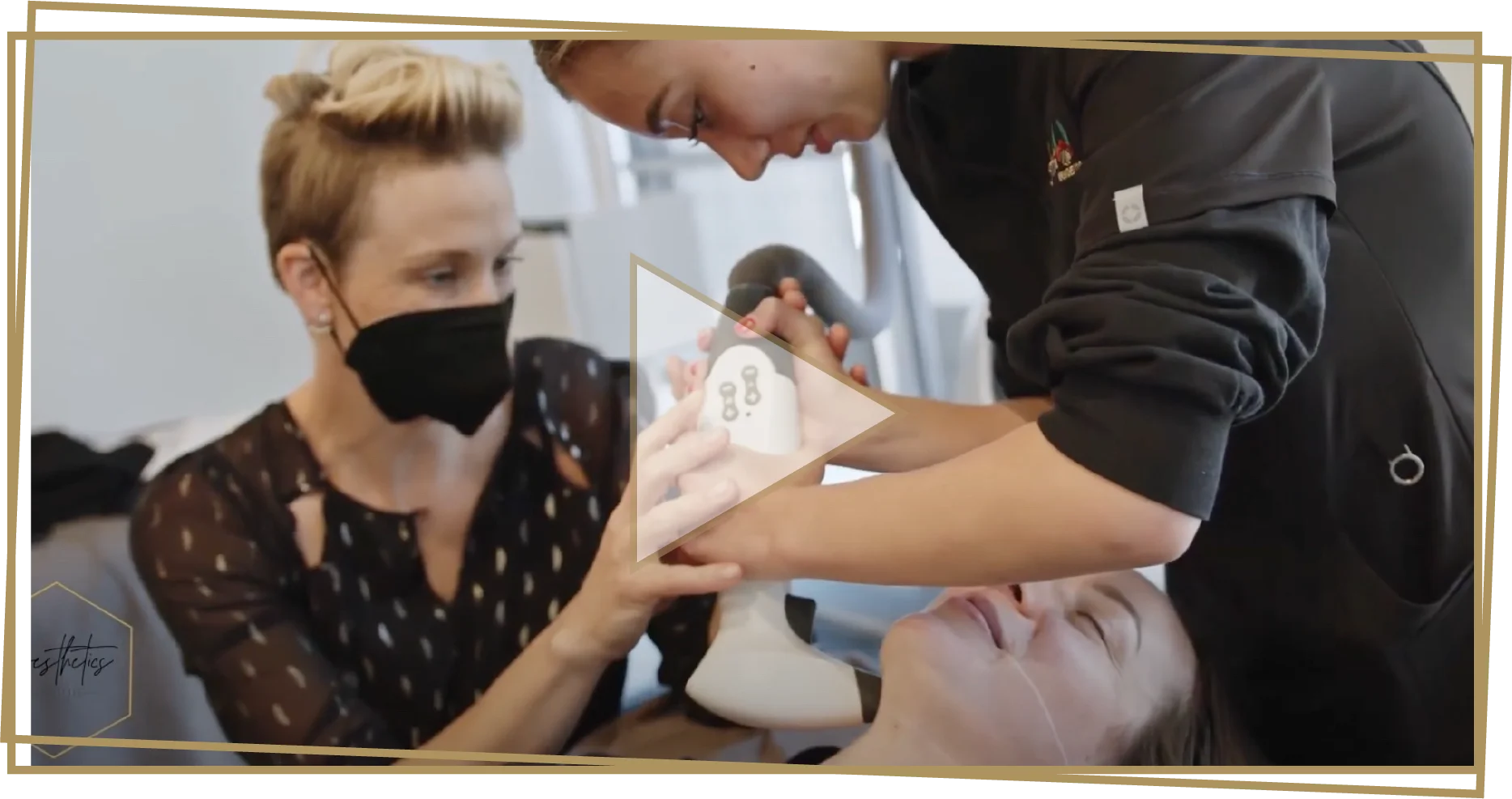
Chemical Peels
Chemical peels are a form of exfoliation that can range from superficial to medium depth.
They work by breaking the bonds between skin cells and triggering the skin to make new, healthy cells.
Chemical peels are great for targeting a variety of skin concerns, such as acne, fine lines and wrinkles, and pigmentation.
Treatments are usually relatively quick, followed by several days of peeling and flaking of dead skin.
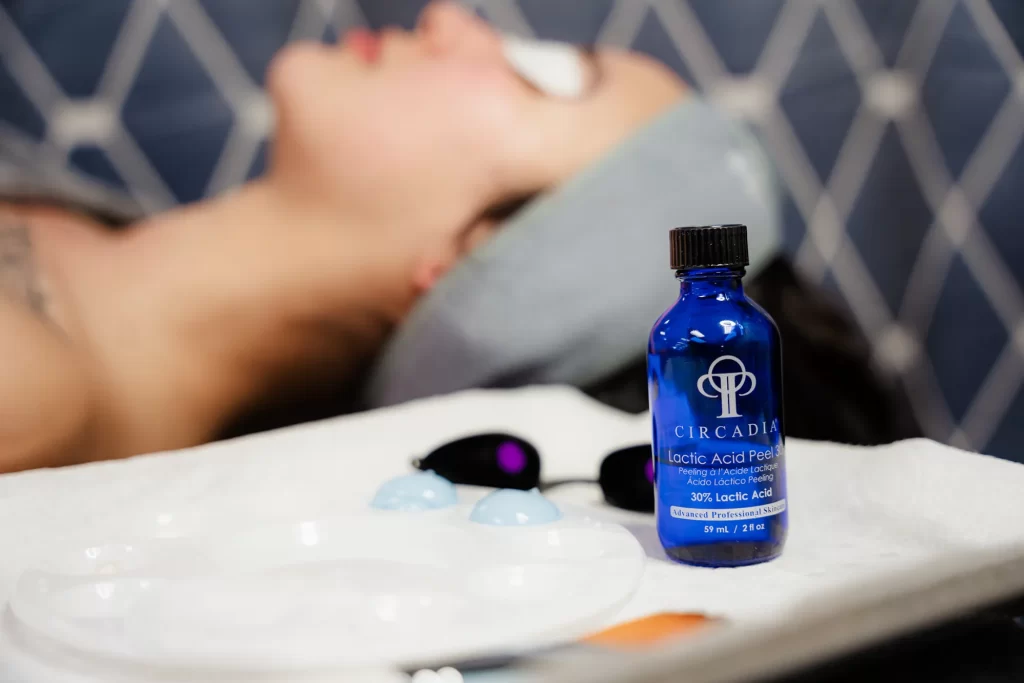
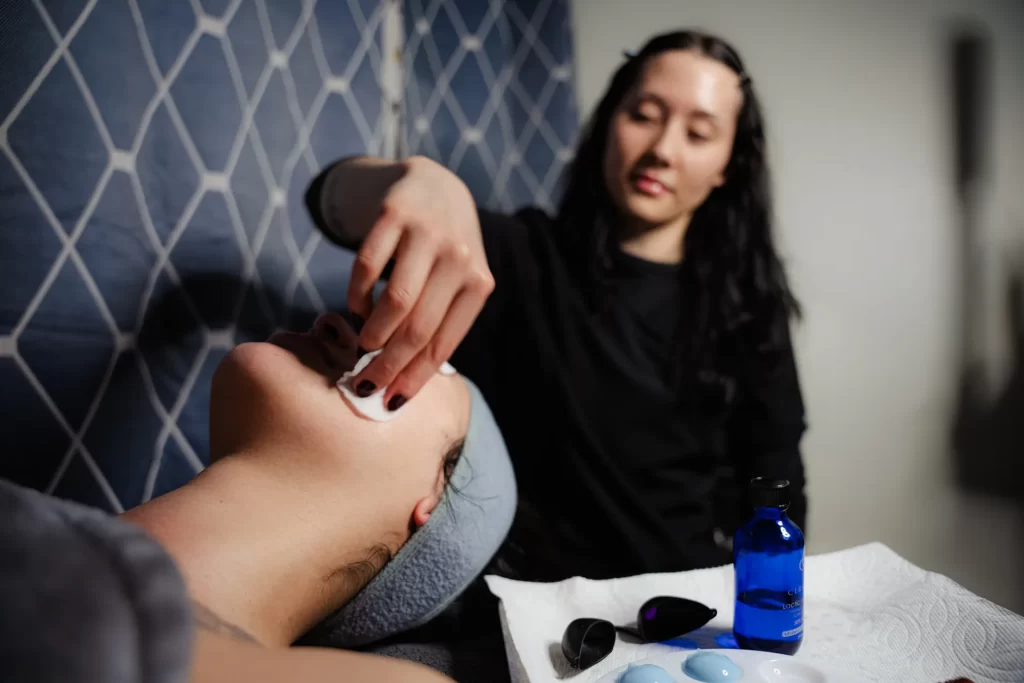
To prepare for the treatment, stop applying exfoliative skin care products two weeks before your appointment, including Retin A, glycolic acids, scrubs, etc.
The treatment will start with your skin being cleansed to remove makeup residue, debris, and oil and then prepped with a product like acetone or alcohol to lift the cuticle and alter the pH of the skin.

Tattoo Removal
Laser tattoo removal is achieved by firing light and sound energy into the tattoo.
This energy forces the ink particles apart, allowing your body’s immune system to absorb them.
During your consultation, your student esthetician will review your health history to ensure that tattoo removal is the correct treatment for your skincare goals.
They will also ensure you understand how to prepare for this treatment, how to care for your skin following your appointment, and all of the potential risks and possible outcomes associated with laser tattoo removal.

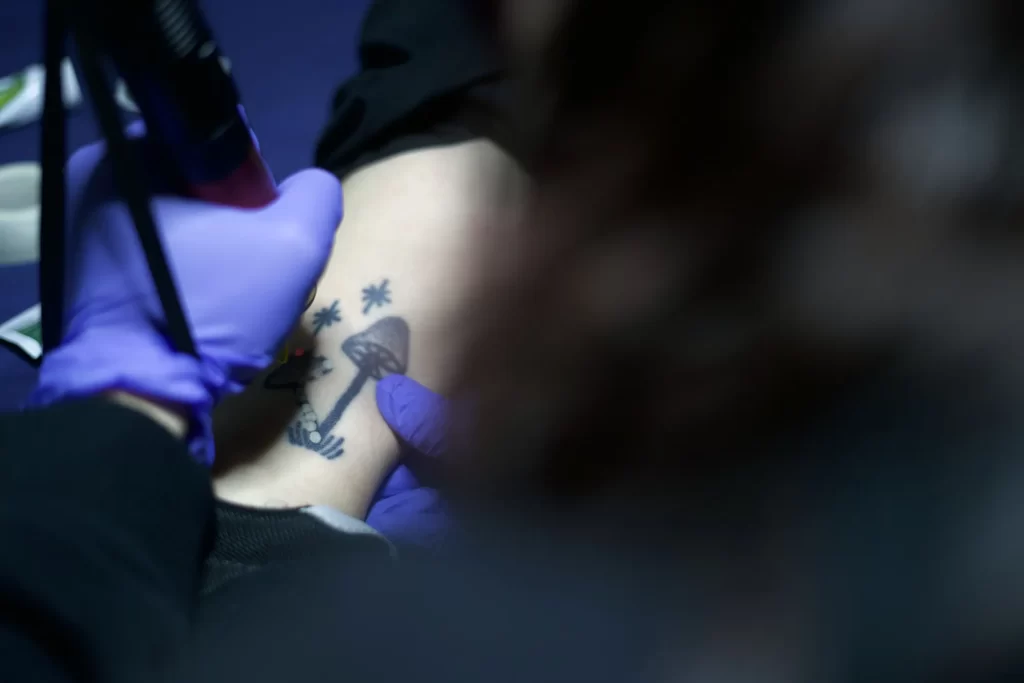
The student esthetician will analyze your tattoo to determine the necessary laser light wavelengths needed for treating the colors present. At this time, they will be able to estimate how many treatments you will need to receive to remove or reduce the appearance of the tattoo.
Not all tattoos can be fully removed, and not all tattoos are eligible for laser tattoo removal. Your student esthetician will determine if your tattoo can be treated and discuss all treatment options with you before you begin your service.
Treatment begins with cleansing of the area to remove oil and product from the skin. The area is then wiped with an antiseptic solution. The laser is traced over the tattoo, while a cold air chiller is used to minimize discomfort.
If you have received a similar treatment elsewhere, you may have experienced the application of a numbing cream. In a school environment, we are not able to administer or apply any prescribed or over-the-counter topical numbing agent to clients.
If you are planning to numb with your own topical cream, you should do so 30-45 minutes before you arrive at the school for your appointment.

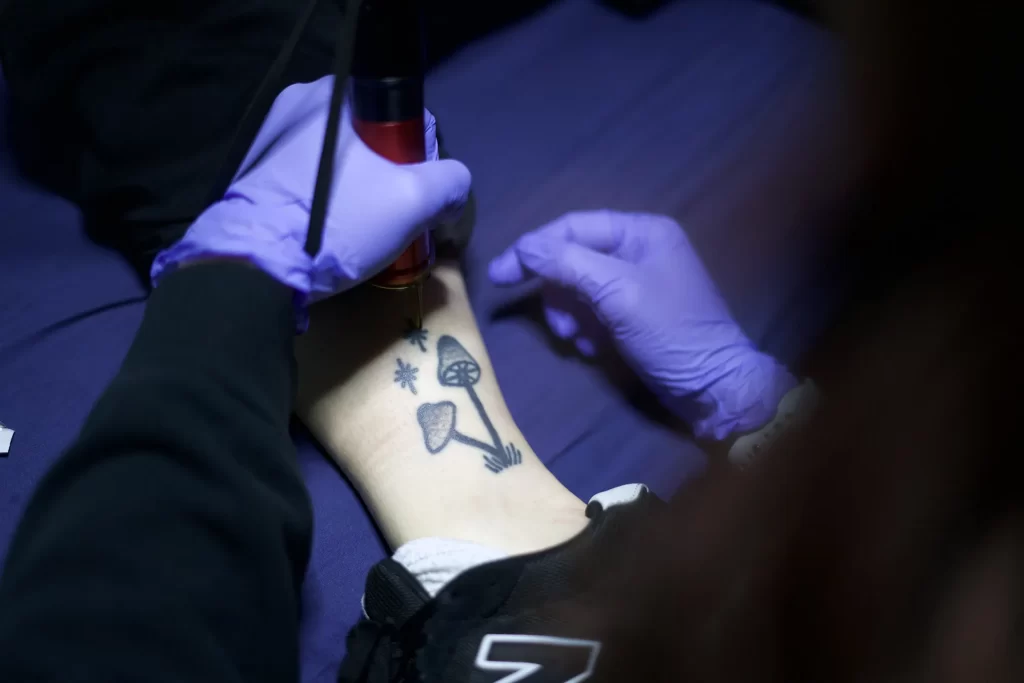
After your treatment, you will want to be gentle with your skin. This is the only laser treatment where the goal is to see an obvious, immediate, and dramatic change in the skin.
Blistering, scabbing, and some pinpoint bleeding may occur and are all normal parts of the healing process.
A clear bandage like Tegaderm or second skin will be applied to the area after it has been treated to minimize infection risk and should be left on until it needs to be changed.
Avoid heat, sun, and sweating for 72 hours, and wear sunscreen for a minimum of two weeks following the removal of the bandage.

